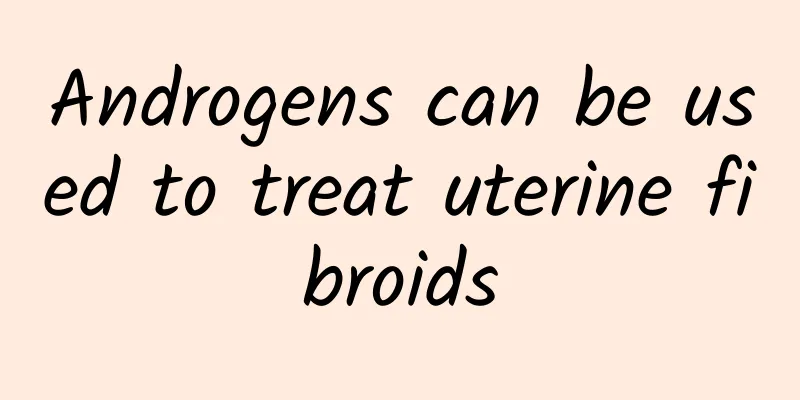Symptoms of benign uterine fibroids How to treat benign uterine fibroids

|
The severity of uterine fibroids depends on the growth rate and size of the uterine fibroids, but uterine fibroids are basically benign. Small uterine fibroids are not enough to cause any threat, but large ones may cause deep damage to the uterus. The degeneration type of uterine fibroids causes various symptoms. What are the symptoms of benign uterine fibroids? The following article will provide you with the answers one by one. Hyaline degeneration of uterine fibroids refers to the accelerated growth rate of uterine fibroids, which will lead to insufficient blood supply, causing some tissues to swell and soften, and the vortex structure will disappear, replaced by a uniform transparent sample. The huge examination is easily confused with sarcoma degeneration. The cell structure cannot be seen under the microscope, and the lesion part is a structureless uniform eosin red area. Hyaline degeneration of uterine fibroids will further develop into cystic degeneration, liquefying the tissue in the degenerative area to form a cystic cavity containing frozen or transparent liquid, and the entire fibroid will be as soft as a cyst. Fatty degeneration of uterine fibroids usually occurs in the late stage of hyaline degeneration or necrosis. Air bubbles in the muscle cells can be clearly seen under a light microscope, and fat staining is positive. Ischemia and necrosis are caused by tumor pedicle torsion or severe infection. The center of the fibroid is far away from the blood supply and is most likely to undergo necrosis. The red degeneration of uterine fibroids is quite special. It is a special type of fibroid necrosis, which usually appears alone in the wall. The cause of this degeneration may be local tissue ischemia, infarction and congestion. Red degeneration can cause blood to infiltrate the tumor. The fibroids are visible to the naked eye, red like raw beef, and the original vortex structure is completely lost. The incidence of calcification and degeneration of uterine fibroids is relatively low. Generally, chronic fibroids have insufficient blood supply. For example, calcium blue deposits are scattered and sparse, and generally cannot be identified, but there is a sandy feeling when cutting the tumor; the lesion is extensive and forms hard stones. The calcified area is dark blue under microscopic examination, forming layered deposits of different sizes and shapes. X-rays can be used for development. What are the symptoms of benign uterine fibroids? The above is a related introduction based on the degeneration type of uterine fibroids. I hope that friends can have a more comprehensive and in-depth understanding of uterine fibroids. Although these are all benign degenerations, they still need to be treated as soon as possible, otherwise it will cause you great harm and even lead to infertility. I can only regret it. |
>>: How to treat uterine fibroids after pregnancy? Symptoms of uterine fibroids after pregnancy
Recommend
Lose weight and don’t want to lose hair? 3 important habits to remember
Even if you succeed in losing weight, it would be...
What medicine should I take if my period is not coming? Don't take medicine casually
For female friends, menstruation is the most comm...
Experts explain how to diagnose ectopic pregnancy
Diagnosis of ectopic pregnancy is the premise of ...
What are the effective methods for treating ovarian cysts?
We know that there are many symptoms of ovarian c...
What should people with uterine fibroids not eat? Top 10 foods that are forbidden for people with uterine fibroids
What should people with uterine fibroids not eat?...
What should I do if I have a protruding belly and a lot of belly fat? Learn these 5 tips to easily lose your belly fat
Do you also have the problem of protruding belly?...
Will abortion affect women’s fertility?
Will abortion affect women's fertility? The i...
How to rub the belly will cause miscarriage? What are the correct ways for pregnant women to rub their bellies?
Pregnant women love to touch their bellies during...
Analysis of several common causes of adnexitis
As people pay more attention to women's healt...
What should I do if I can only eat rice when eating out? Nutritionists recommend…
Friends often ask Stella that they often hear nut...
How much does it cost to cure pelvic peritonitis?
After suffering from pelvic peritonitis, women ar...
What are the common symptoms of adnexitis?
What are the symptoms of adnexitis? First: Acute ...
How to regulate diet for women during menopause
During menopause, you need to pay attention to so...
A brief introduction to various treatment methods for uterine fibroids
Women are also very likely to suffer from gynecol...
Experts review the diagnosis of acute pelvic inflammatory disease
What is the diagnosis of acute pelvic inflammator...









